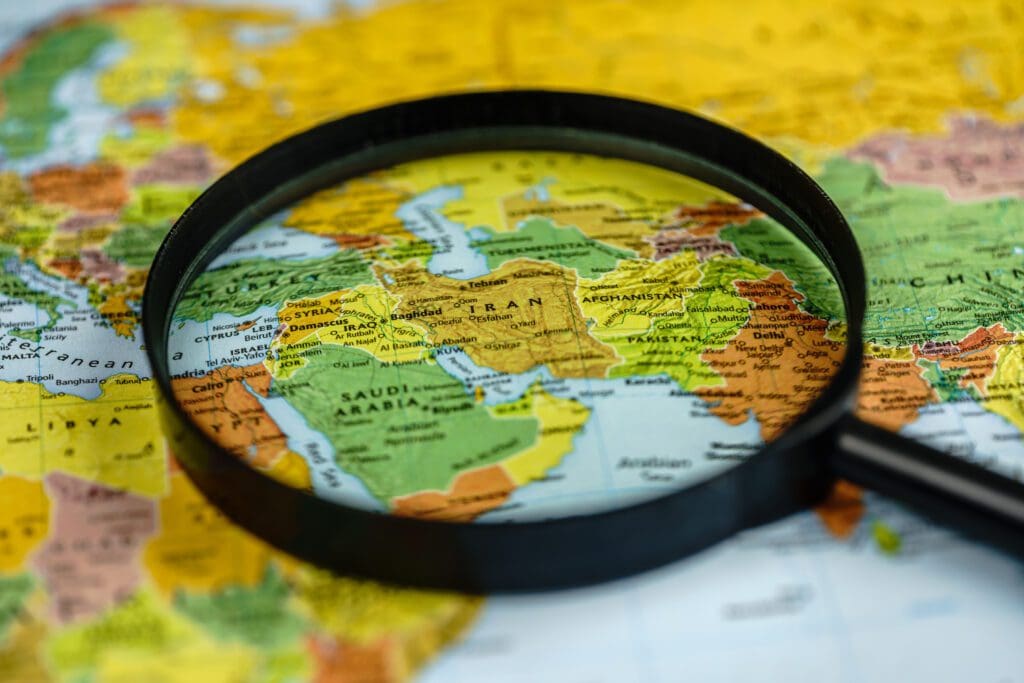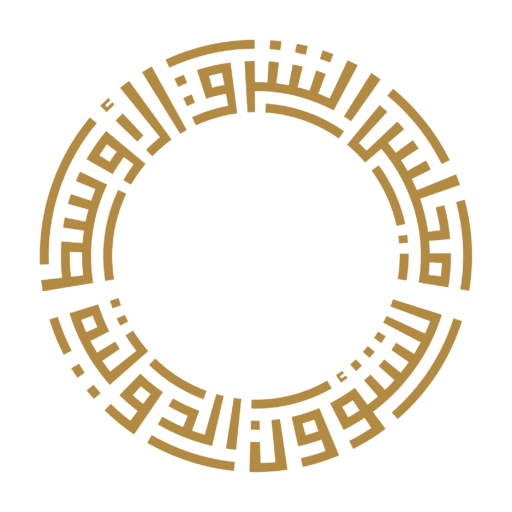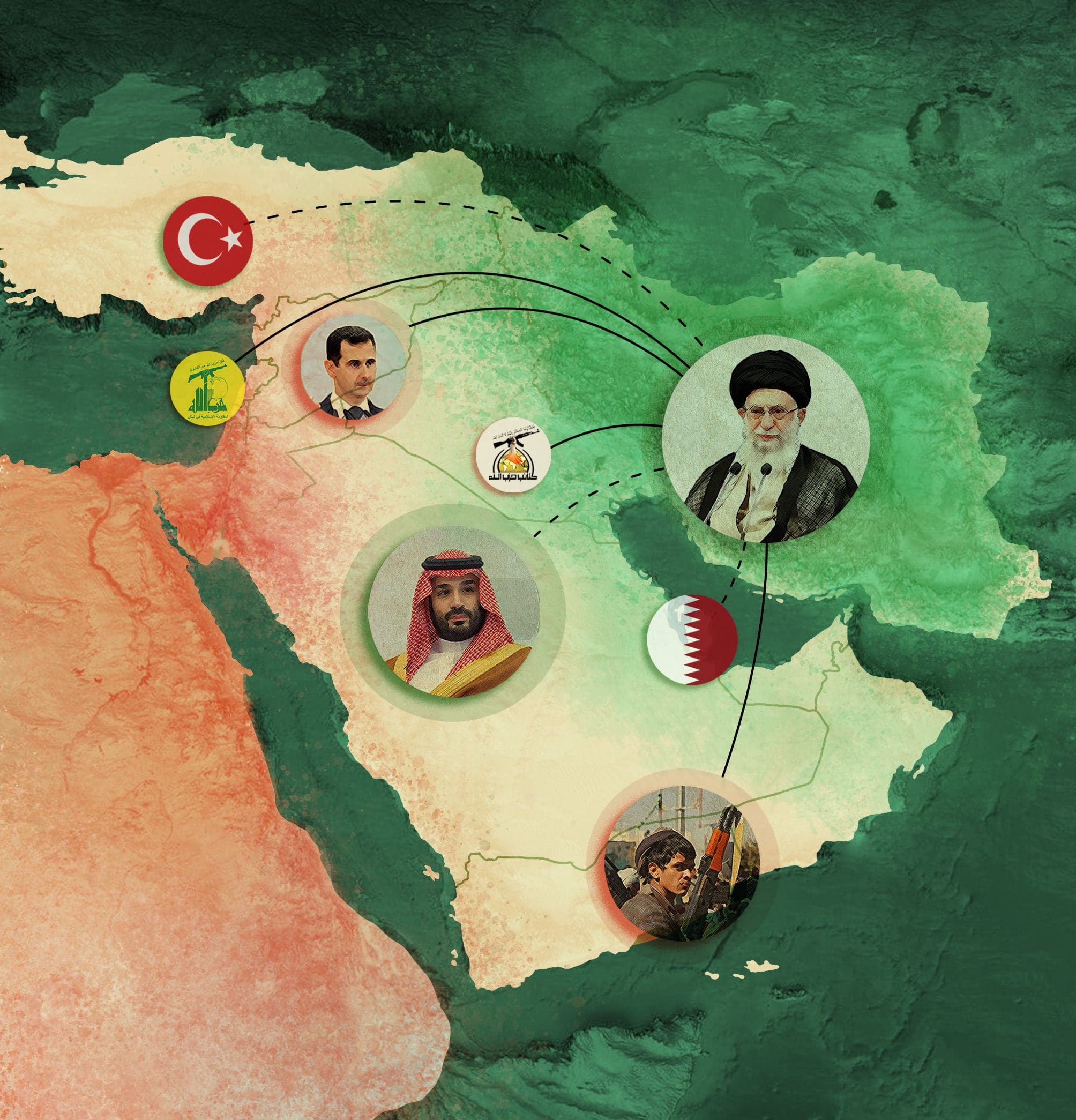
Iran in the Middle East: Introduction
April 2024
Iran’s role in the Middle East is both historical and evolving, marked by a strategic interplay of religion, ideology, politics, and regional dynamics. As a country situated at the core of vital geopolitical junctures, Iran’s actions have far-reaching implications, resonating across the region and beyond. This dossier is dedicated to deciphering the complexities of Iran’s regional policy, shaped by a fusion of historical legacies, ideological orientations, strategic interests, and political aspirations.
The significance of Iran’s relationships with its neighbors—stretching from Türkiye in the northwest to the Arab states to its south—is a central aspect of its regional policy. A complex interplay of cooperation and competition characterize these interactions, with significant implications for the region’s stability and security. Iran’s neighborly engagement has been volatile, mixing antagonistic rhetoric with dialogue and strategic positioning.
The signing of the 2015 Joint Comprehensive Plan of Action (JCPOA) promised to settle the nuclear issue and bring Iran back into the fold. However, the unilateral withdrawal of the United States (U.S.) in 2018 and its reinstatement of sanctions through a policy of “maximum pressure” effectively crippled the deal, leading Iran to respond by gradually curtailing its compliance with the agreement in subsequent years. Moreover, the ascendancy of a hardline faction under President Ebrahim Raisi and the parties’ inability to come to agreement that would discourage future unilateral actions (such as the U.S. withdrawal), have seriously limited the scope for nuclear talks, against a background of heightened regional tension.
In terms of geographical scope, Iran’s influence extends to key countries, such as Syria, Iraq, and Yemen. In Syria, Tehran’s involvement has been a critical factor in saving President Bashar al-Assad’s regime and marking a venue for closer Iran-Russia cooperation, which later began to manifest in the war in Ukraine. In Iraq, Iran has expanded its influence both directly and through its allies within the Shiite factions. Iraq has also turned into a proxy battlefield between Iran and the United States. Similarly, in Yemen, Iran’s support for Ansar Allah (the Houthi movement) underscores its strategic intent to extend its influence in the Arabian Peninsula and to counterbalance Saudi Arabia’s involvement in Bahrain and Syria.
The “Axis of Resistance,” a network of Iran-backed actors, is a significant element of Iran’s regional strategy. This network includes groups like Hezbollah in Lebanon and Hamas in Gaza and represents a key tool in Iran’s foreign policy. Crucially, the “Axis of Resistance” allows Iran to project power and influence beyond its borders while reducing the risk of direct confrontation with key adversaries like the United States and Israel. The recent involvement of Iran-backed groups, namely Hezbollah and the Houthis, in the ongoing war between Hamas and Israel in Gaza further illustrates Tehran’s strategic positioning within the broader regional context.
These developments occur against the backdrop of shifting domestic politics in Iran, marked by a trend toward increased securitization and authoritarianism. As Iran becomes more authoritarian domestically and faces increased pressure internationally from the West, there has been a noticeable pivot toward cooperation with Eastern powers like Russia and China. This shift is part of Iran’s “Look East” strategy, reflecting a strategic realignment in response to global and internal dynamics. These shifts impact how Iran engages regionally, influencing its interactions, policies, and alignments.
This dossier provides a comprehensive overview of pertinent themes in Iranian foreign policy, offering a nuanced understanding of Iran’s role in the Middle East and the responses it elicits from regional and external actors.
In the first chapter, Mehran Kamrava discusses Iran’s evolving “neighborhood policy” under President Ebrahim Raisi, emphasizing a shift toward improved relations with the country’s Arab neighbors, especially Saudi Arabia. Kamrava examines how this approach differs from past efforts due to its formal adoption as a key foreign policy doctrine. The chapter analyzes various factors contributing to the policy’s effectiveness, including Saudi Arabia’s receptivity and broader structural changes in the region. Additionally, it considers the historical context of relations between Iran and Arab states since the 1979 revolution and recent diplomatic initiatives, such as the Hormuz Peace Initiative and rapprochement with Saudi Arabia, highlighting the impact of international and regional dynamics on Iran’s foreign policy.
The second chapter, written by Hamidreza Azizi, then assesses the deep-rooted alliance between Iran and Syria, particularly since the 2011 Syrian conflict, in the context of recent regional shifts. Azizi discusses how new dynamics have started to influence this alliance, crucial for Iran’s strategic regional interests, such as Syria’s reentry into the Arab League, improving Iran-Saudi Arabia relations, and Arab-Israeli normalization. The chapter explores the potential impact of these regional changes on the Iran-Syria relationship, suggesting that while Syria’s diplomatic realignments provide new opportunities, they do not necessarily reduce Iran’s influence, especially in military and security matters.
Subsequently, Fatima Alsmadi’s contribution deals with the evolving dynamics of the Iran-Saudi relationship. It focuses on the historical context of their interactions, marked by periods of intense conflict, competition, and occasional diplomatic engagements. The chapter discusses the nature of disputes between the two sides, which encompass a wide range of issues including regional competition, energy, foreign relations, and differing ideological perspectives in foreign policy. Alsmadi delves into the potential success and limitations of the rapprochement between Saudi Arabia and Iran, considering the factors influencing the trajectory of their relationship.
In the fourth chapter, Faozi Al-Goidi focuses on Iran’s role in the Yemen war, its actual influence, and its regional gains. Al-Goidi discusses differing perspectives on Iran’s involvement, whether the Houthi movement is a proxy or an independent entity with shared goals with Iran. The chapter examines Iran’s foreign policy motivations in Yemen, emphasizing its support for dissident groups opposing Western influence. It traces the historical relationship between Iran and the Houthis, contrasting their religious, political, and doctrinal factors.
Closing the first section, Muhanad Seloom’s chapter, the fifth, explores the dynamic relationship between Iran and Iraq, tracing their historical journey from adversaries to allies. The chapter delves into Iran’s expanding influence in Iraq post-2003, particularly in the political, security, and economic spheres. Seloom situates the two country’s ties within historical context, reflecting on the significant shift from the Iran-Iraq war to a surprising collaboration in the new millennium. The chapter also examines Iran’s strategic imperatives in Iraq, such as using the country as a buffer zone, a conduit for regional alliances, and an economic partner. Additionally, it discusses Iran’s sophisticated use of proxy dynamics in Iraq, which has cemented its influence within the Iraqi political landscape.
Opening the second section, Shahram Akbarzadeh’s chapter examines the complexities surrounding the attempted revival of the JCPOA amid changing global and regional dynamics. The chapter reflects on the impacts of the U.S. withdrawal from the deal under President Donald Trump, the escalation of tensions in the Middle East, and the rise of a hardline administration in Iran. Akbarzadeh analyzes the ideological underpinnings of Iran’s foreign policy, its strategic pivot toward Russia and China under the “Look East” policy, and the challenges these pose for reviving the nuclear deal. The chapter also explores Iran’s asymmetrical military capabilities and regional ambitions. It argues that these developments—along with the state’s growing integration into organizations like the Shanghai Cooperation Organization (SCO) and the bloc composed of Brazil, Russia, India, China, and South Africa (BRICS)—have reduced the urgency for Iran to revive the JCPOA and complicated the situation for the United States.
Subsequently, in the seventh chapter, Luciano Zaccara analyzes Raisi’s handling of international relations, which have defied expectations of increased isolation. Zaccara points out that Raisi’s success has largely relied on building upon the strategic foundations laid by his predecessors. The chapter highlights the continuation of policies, such as asymmetric deterrence, regionalism, and the “Look East” policy, tracing their roots back to the presidencies of Mahmoud Ahmadinejad and Hassan Rouhani. It also underscores the revival of Tehran’s “good neighbor” policy toward Gulf countries and its re-engagement with Latin America. In sum, Zaccara argues that Raisi’s tenure marks a continuation of established foreign policies in the Islamic Republic.
The eighth and final chapter by Azadeh Zamirirad, examines Iran’s evolving foreign policy under Raisi, particularly focusing on its “neighborhood” and “Look East” policies. Zamirirad explores how these policies are increasingly intertwined due to developments like Russia’s war against Ukraine and China’s involvement in the Gulf. The chapter assesses Iran’s growing assertiveness and its pursuit of a revisionist goal in shaping a post-Western order. It also discusses the Raisi administration’s success in diplomatic relations with Arab states, especially Saudi Arabia, and the strategic alignment with Eastern powers in response to Western sanctions and regional developments.
Please note that this dossier was compiled before Iran’s drone and missile attack on Israel on April 13. The strike marked Tehran’s first direct attack on Israel, framed as a retaliation for the Israeli strike on the Iranian consulate in Damascus on April 1. This dossier provides insights into Iran and its policy thinking. The analysis does not reflect recent developments.
The opinions expressed in this chapter are those of the author and do not necessarily reflect the views of the Middle East Council on Global Affairs.



